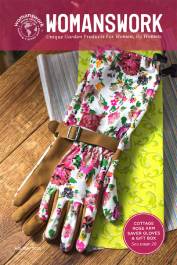Designed For The Way Women Work.
Search results for: 'AND AND'
Suggested search terms: 1 id hand and x, 1 id hand and, 1 id hand and x y, 1 id hand and x y 0, 1 id hand and nbSp AND OR
Show
per page
-
Natasha Bowens Blair didn’t believe you could grow plants in a meaningful way that weren’t edible or medicinal until she experienced the joy of growing and arranging flowers at Native Mountain Farm outside of Frederick, Maryland. The farm, situated on a lush piece of landscape at the base of South Mountain in Boonsboro, is operated by Natasha and her mother-in-law Julie Blair on land Julie and her late husband Billy purchased 32 years ago. [caption id="attachment_3868" align="alignleft" width="207...
-
[caption id="attachment_3907" align="alignright" width="180"] My canna lily growing in a container[/caption] This year I purchased three popular tropical plants for outdoor containers: canna lilies, Colocasia and Alocasia (aka Elephant ears). I was happy with all three, though the canna lily was the star performer for me. I love plants that come back each year, even if it means digging them up in the fall and storing them away for the winter. These plants can be left in the ground if you live in Z...
-
Bruce Baker has been working on one bonsai project for 12 years -- and he’s just getting started. Taking the long view is part of being a bonsai artist or practitioner. “Bonsai trees can live hundreds of years and they’re always changing,’ he says. “They’re never done,” he adds. The process, as Bruce sees it, is about gradually revealing what is already there, and enhancing or sometimes exaggerating it. It takes patience, planning and plenty of solitary contemplation—just you and you...
-
The Dirty Dozen and Clean Fifteen-- It’s not always easy to find organically grown produce, but one nonprofit group called The Environmental Working Group (EWG) has compiled a list of the 12 fruits and vegetables that are the most pesticide-contaminated and are to be avoided if they’re not organically grown. The group updates the list of the Dirty Dozen every year. The list includes strawberries, spinach, kale/collard and mustard greens, peaches, pears, nectarines, apples, grapes, bell and hot pep...
-
Traditionally it was considered good form to tidy up the garden before winter by cutting back just about everything to a few inches of the ground. Many horticulturists and naturalists now recommend that you leave some plants for winter interest and wildlife sustainability. But which ones? Here are Ruth Clausen’s tips for putting your garden to bed this fall. Be choosy about what needs to go. Observe which plants are diseased or pest-ridden and get rid of those. Put diseased plant material in a tra...
-
Horticulturist and author Ruth Rogers Clausen has a new book out, published by Timber Press, titled "Deer-Resistant Native Plants for the Northeast," co-authored with Gregory D. Tepper. Womanswork is giving away a copy of her new book, which features 75 native plants that deer seldom browse. She gives each plant a deer resistant rating from 7-10. Anything below 7 is considered deer candy and is not included in the book. To enter, tell us in a Comment below, or via Facebook or Instagram, why you wan...
-
I have three favorite bulbs that I like to grow in the summer. In my Zone 6 garden they have to be planted in the spring after the last frost. That's what I'm doing now. There are many other summer blooming bulbs as well, but these are my personal favorites, currently. The term 'bulb' applies to a large class of flowering and ornamental bulbouslike plants in their dormant condition, including corms, tubers, rhizomes and pips. [caption id="attachment_4304" align="alignright" width="190"] White acidanth...
-
Queen Anne's Lace is the common name used for a variety of plants that share similar characteristics: flowers with a flat-topped, lacy white umbel and delicate foliage. Its foliage makes it a favorite in floral arrangements as a filler. The wild species, daucus carota, is growing everywhere in parts of the US at this time of year, and has been labeled invasive in many States. Although I still find it pretty growing by the roadside (and even in parts of my garden), I thought it was time to learn about so...
-
The steps I put in leading down to the pond and stream are made of wood. I chose to make wood steps because the cost of a stone path would be prohibitively expensive. The stones themselves and the labor to move them into position, given the length of the hillside (40-50') and the inaccessability of the site to a delivery truck, made that approach very expensive. After installing the wood steps I was happy with the choice as I felt it achieved some important objectives, both functionally and from a desi...
-
One of Yolanda Burrell’s happiest childhood memories is of climbing the peach tree in her maternal grandmother’s garden in Los Angeles to pick peaches that were the size of tennis balls, as she remembers them. Early memories like these have informed the way she views the landscape today. “Everything we grow in this climate has to do double duty,” she says. “Water is scarce so I feel that it should be used to grow food rather than ornamentals exclusively.” [caption id="attachment_3323" alig...





